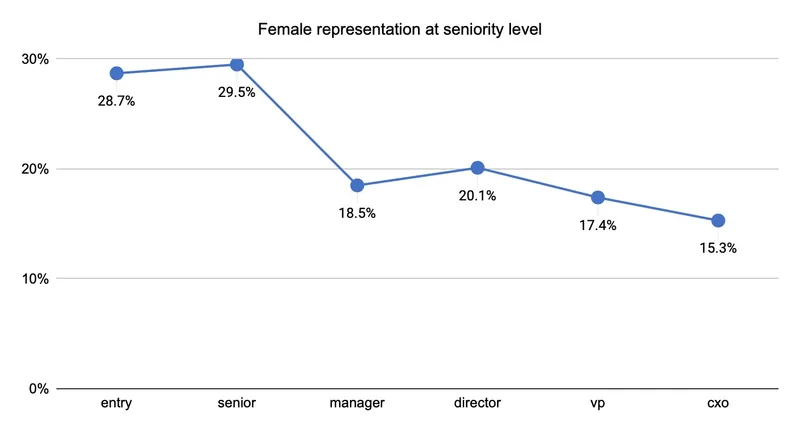Report highlights gender disparities in corporate leadership in India
‘Women in Leadership in Corporate India’ —a report by LinkedIn and The Quantum Hub—reveals there is still a significant gap in achieving gender parity in top management roles across industries in India.
Professional networking platform LinkedIn and The Quantum Hub, a public policy consulting firm, have launched a joint report on ‘Women in Leadership in Corporate India.’
The findings of the report reveal that despite progress, there is a gap when it comes to gender parity in leadership roles across industries.
Based on LinkedIn's Economic Graph data, the findings offer insights into gender representation across industries and job functions, highlighting progress and persistent challenges in achieving gender equality.
The data, self-reported by over 1 billion LinkedIn members, covers trends from 68 million companies, 135,000 schools, and 41,000 skills globally.
Where is the gap?
According to the report, there has been an overall increase in the representation of females across the workforce over the years, rising from 23.9% in 2016 to 26.8% in 2024.
However, there have been slight fluctuations between 2022 and 2024, with a decline of 0.5 percentage points. The percentage of women in senior leadership roles increased from 16.6% in 2016 to 18.7% in 2023 but has dipped slightly to 18.3% in 2024, which may correct by the end of the year.

Female representation across the whole workforce and percentage of women holding Director, VP, C-suite or Partner positions. (Please note that data for 2024= up to 31 January 2024)
The report also points out that despite relatively strong female representation at the entry level at 28.7% and senior independent contributor levels at 29.53%, there is a significant drop as women advance to managerial positions at 18.59% followed by a continuous decline in female representation in leadership positions, with 20.1% at director roles, 17.4% at Vice President roles and at 15.3% at C-suite positions.
Sector-wide variations
Findings from the report also reveal sector-wide variations in women's leadership representation. Education at 30% and government administration at 29% have the highest representation of women in leadership roles, followed by administrative and support services and Hospitals and Healthcare, each with 23%. Sectors like technology, information, and media and financial services each have moderate female representation in leadership at 19%.

Female representation at every seniority level across industries
The lowest representation is found in construction, oil, gas, and mining, and utilities, each with 11% female representation in leadership, while wholesale and manufacturing have 12%, and accommodation and food services have 15%.
Consumer services experienced a significant increase from 30% in 2016 to 37% in 2024.
Way forward
Based on its findings, the report also suggests pathways for different stakeholders including government, industry, and civil society to support and promote women in leadership roles.
These recommendations have been categorised as long-term (5-10 years), medium term (3-5 years) and short-term (1-3 years). They include suggestions on a ‘skills-first’ approach to hiring, mentorship and networking opportunities, and shared parental leave, among others.
Aditi Jha, Board Member, Country Head, Legal & Government Affairs, LinkedIn India, said, “LinkedIn Economic Graph data shows that despite progress, women still face obstacles in reaching leadership roles due to bias, societal norms, and structural barriers. I hope this report will inspire tangible steps towards narrowing gender disparities, particularly in senior leadership positions.”
The launch event was held in New Delhi, with a keynote address by Anna Roy, Senior Advisor at NITI Aayog. The event saw participation from attendees across the government, corporate sector, multilateral organisations, and civil society.
Edited by Megha Reddy







